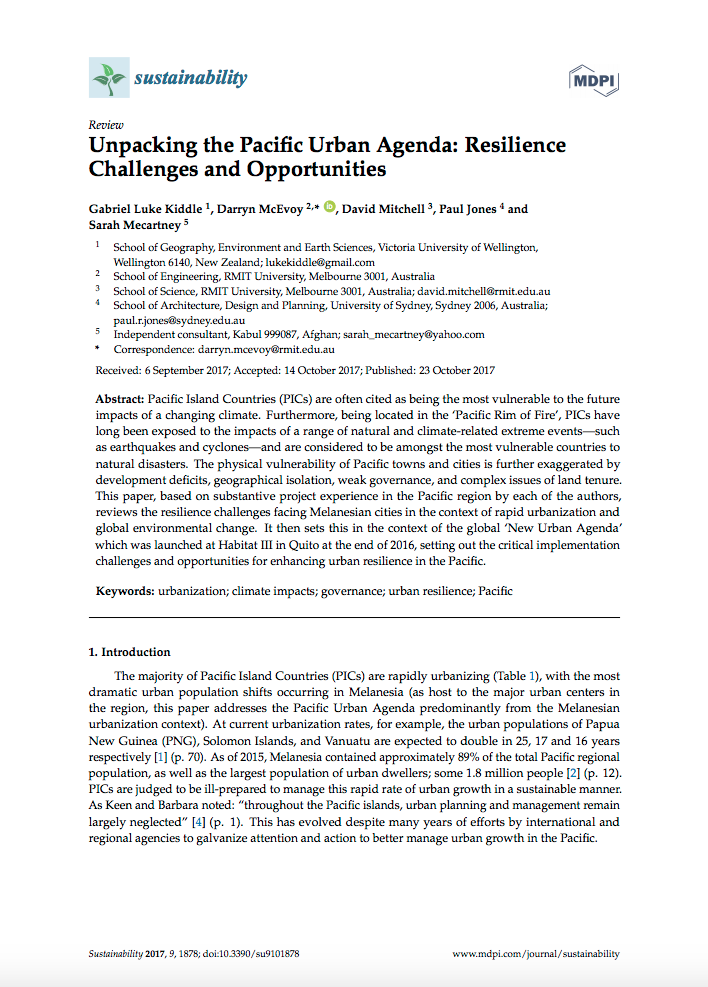Location
Molecular Diversity Preservation International (MDPI), an organization for deposit and exchange of molecular and biomolecular samples, was active in 1996-2010.
Members:
Resources
Displaying 1 - 5 of 21Indicators for Measuring Spatial Justice and Land Tenure Security for Poor and Low Income Urban Dwellers
Abstract
Unpacking the Pacific Urban Agenda: Resilience Challenges and Opportunities
Pacific Island Countries (PICs) are often cited as being the most vulnerable to the future impacts of a changing climate. Furthermore, being located in the ‘Pacific Rim of Fire’, PICs have long been exposed to the impacts of a range of natural and climate-related extreme events—such as earthquakes and cyclones—and are considered to be amongst the most vulnerable countries to natural disasters. The physical vulnerability of Pacific towns and cities is further exaggerated by development deficits, geographical isolation, weak governance, and complex issues of land tenure.
Land Change in the Greater Antilles between 2001 and 2010
Land change in the Greater Antilles differs markedly among countries because of varying socioeconomic histories and global influences. We assessed land change between 2001 and 2010 in municipalities (second administrative units) of Cuba, Dominican Republic, Haiti, Jamaica, and Puerto Rico. Our analysis used annual land-use/land-cover maps derived from MODIS satellite imagery to model linear change in woody vegetation, mixed-woody/plantations and agriculture/herbaceous vegetation. Using this approach, we focused on municipalities with significant change (p ? 0.05).
The Status of National Legal Frameworks for Valuing Compensation for Expropriated Land: An Analysis of Whether National Laws in 50 Countries/Regions across Asia, Africa, and Latin America Comply with International Standards on Compensation Valuation
The challenges associated with determining fair compensation for expropriated land have been extensively discussed and debated among scholars, practitioners, policymakers, and the public. However, to date, a comprehensive study of national-level compensation procedures established by law considering whether such procedures meet internationally recognized standards on compensation valuation has not been conducted. This article aims to bridge this gap by serving as a reference point and informing “expro” debates among scholars, practitioners, and policymakers.
Estimating flow resistance of wetlands using SAR images and interaction models
The inability to monitor wetland drag coefficients at a regional scale is rooted in the difficulty to determine vegetation structure from remote sensing data. Based on the fact that the backscattering coefficient is sensitive to marsh vegetation structure, this paper presents a methodology to estimate the drag coefficient from a combination of SAR images, interaction models and ancillary data. We use as test case a severe fire event occurred in the Paraná River Delta (Argentina) at the beginning of 2008, when 10% of the herbaceous vegetation was burned up.





